What Is The Difference Between A Chiropractor And An Osteopath
As someone who is always looking for innovative solutions to improve my health and well-being, I often find myself exploring alternative forms of healthcare. Two practices that have piqued my interest are chiropractic and osteopathy. While they may seem similar at first glance, there are distinct differences between the two that make them unique in their approaches to holistic care.
Chiropractors and osteopaths both focus on the musculoskeletal system and aim to alleviate pain and promote overall wellness. However, their methods of treatment and philosophies differ significantly.
Chiropractors primarily use manual adjustments or manipulations to restore proper alignment of the spine and joints, believing that misalignments can cause a variety of health issues throughout the body.
On the other hand, osteopaths take a more holistic approach, considering not only the musculoskeletal system but also the interconnectedness of all bodily systems. They use a range of techniques such as gentle manipulation, stretching, massage, and even prescribing medication when necessary to address imbalances in the body.
In this article, know what is the difference between a chiropractor and an osteopath. By understanding these differences, we can better navigate our own healthcare journey and make informed decisions about which practice may be most beneficial for us.
Difference Between Chiropractor And Osteopath
What is the main difference between a chiropractor and an osteopath? Allow me to explain.
Both professionals treat musculoskeletal issues, but differently. Chiropractors focus on the spine, while osteopaths treat the whole person.
Chiropractic doctors diagnose and treat spine conditions. They think spine misalignments affect body function. Chiropractors correct these misalignments through manual manipulations to improve spinal health. The techniques they use to relieve pain and improve mobility are often specific.
Osteopaths view the body as a whole with interconnected parts. In addition to the spine, they diagnose and treat muscles, joints, and organs. Osteopaths restore body balance through stretching, mobilization, and soft tissue manipulation. Their goal is to promote wellness by treating symptoms and causes.
Thus, while chiropractors and osteopaths aim to relieve musculoskeletal issues, their methods differ. Chiropractors adjust the spine, while osteopaths examine all body functions.
Approach To Healthcare
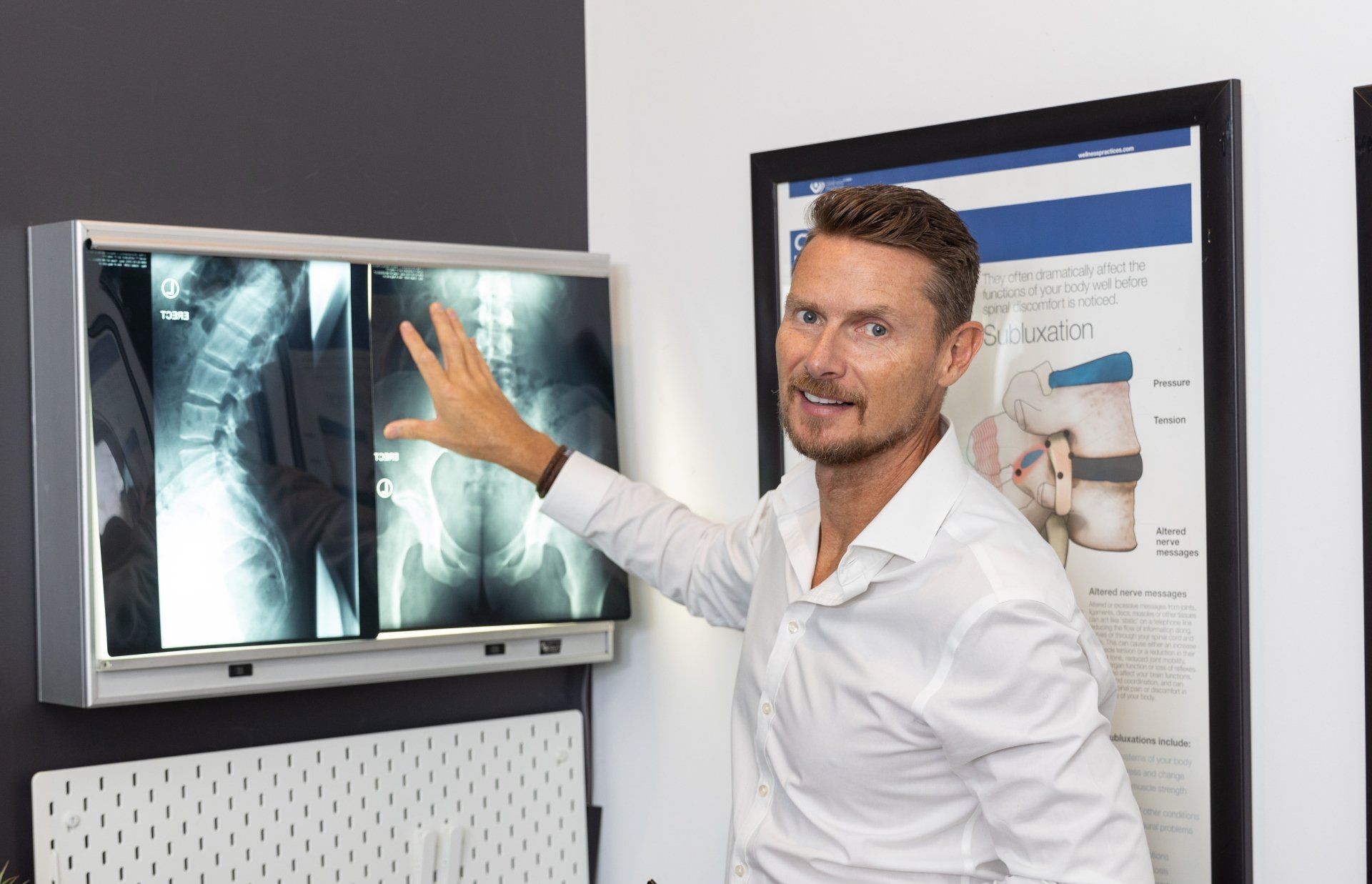
Explore the different methods used by chiropractors and osteopaths to better understand their approaches to healthcare.
Chiropractors emphasize spine and nervous system alignment. They believe spine misalignments can cause health problems, so they manually adjust them to restore nerve function and overall well-being.
In contrast, osteopaths provide holistic care. They consider the circulatory, respiratory, and digestive systems, as well as the musculoskeletal system. Osteopaths believe that a problem in one body part can affect others. Thus, they use massage, stretching, and joint mobilization to treat the whole body.
Chiropractors and osteopaths both use non-invasive methods to improve health, but their methods differ. Chiropractors emphasize spinal adjustments to restore balance. Osteopaths consider multiple factors that may be causing a patient's condition.
Chiropractic care focuses on spinal alignment and nerve function, while osteopathy considers all body systems. Understanding these differences can help people choose the right practitioner.
Treatment Methods
Discover effective and personalized treatment methods to give you relief, improve your health, and regain control.
Chiropractors focus on spinal adjustments using chiropractic therapy, while osteopaths use a wider range of manual techniques to treat the spine and other body parts.
Chiropractic therapy corrects spinal misalignments and promotes nervous system function by manipulating the spine with manual adjustments, spinal decompression, or instrument-assisted adjustments. These treatments aim to reduce pain, improve mobility, and improve
Instead of just spinal adjustments, osteopaths use a more holistic approach that includes soft tissue manipulation, joint mobilization, stretching exercises, and craniosacral therapy to restore balance and harmony in all body systems.
Despite their different treatment methods, chiropractors and osteopaths aim to promote optimal health through natural means, without medication or invasive procedures. Both professions empower patients by teaching self-care practices like exercise and posture improvement.
Musculoskeletal Specialists
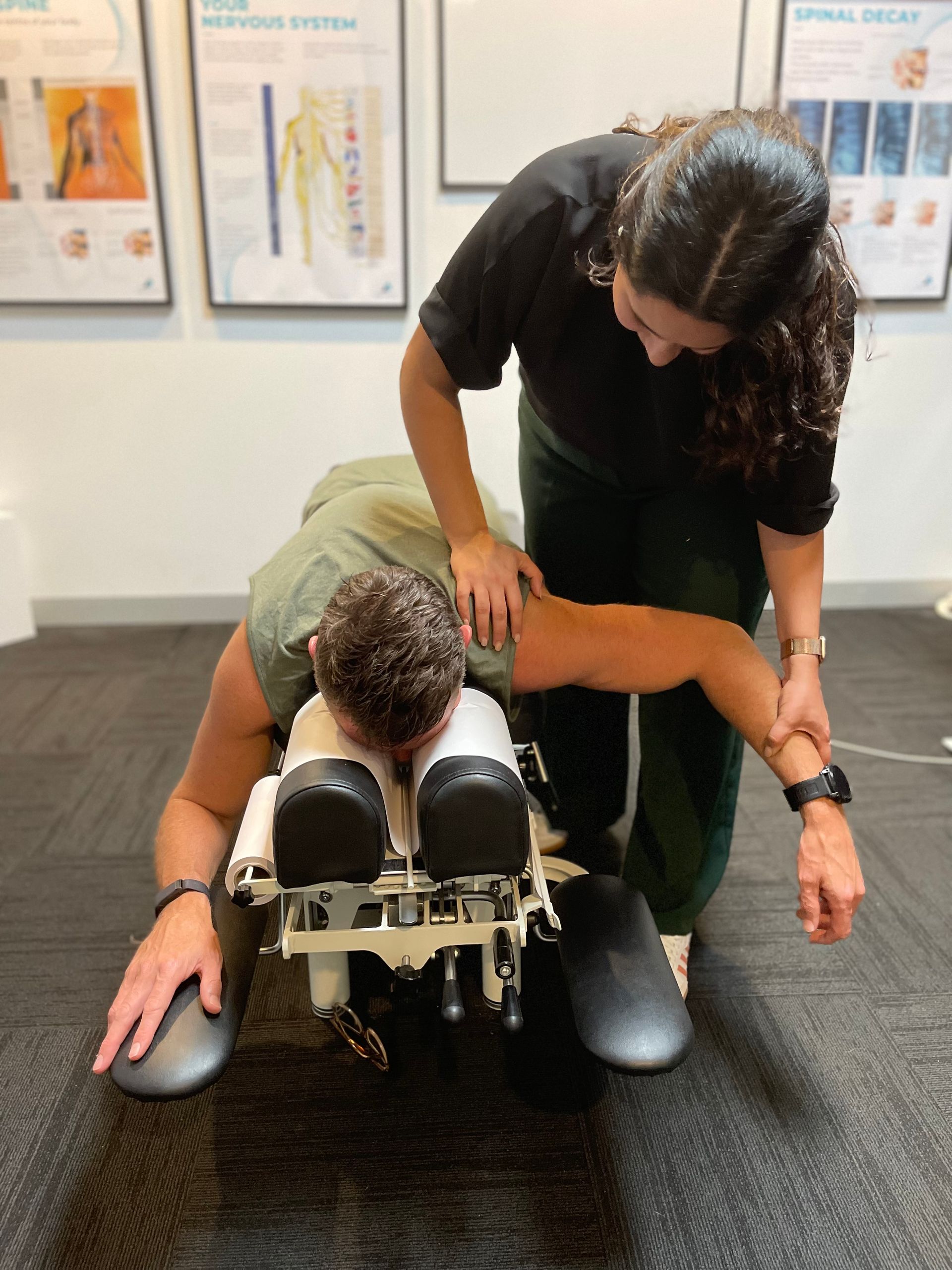
Need a musculoskeletal specialist to treat your bones, muscles, tendons, and ligaments? Chiropractors and osteopaths are both skilled at treating musculoskeletal issues, but there are some key differences.
Consider these four crucial points:
- Chiropractors focus primarily on the spine: One of the main differences between chiropractors and osteopaths is their area of expertise. Chiropractors specialize in spinal alignment and manipulation techniques. They believe that misalignments in the spine can cause a wide range of health problems throughout the body. By using manual adjustments or other therapies, chiropractors aim to restore proper alignment and alleviate pain.
- Osteopaths take a holistic approach: Unlike chiropractors who mainly focus on the spine, osteopaths take a more holistic approach to treatment. They view the body as a whole system where all parts are interconnected. Osteopaths use a variety of techniques including soft tissue manipulation, stretching exercises, and joint mobilization to address musculoskeletal issues. They also consider lifestyle factors such as diet and stress levels when developing treatment plans.
- Both provide non-invasive treatments: Another similarity between chiropractors and osteopaths is their preference for non-invasive treatments. Both professions prioritize conservative methods before considering surgical options. This means that they will often try manual therapies or recommend exercises and lifestyle changes before resorting to more invasive procedures.
- Different training backgrounds: The training paths for chiropractors and osteopaths differ slightly. Chiropractic education focuses heavily on spinal adjustment techniques while osteopathic education includes broader medical training similar to that of medical doctors (MDs). Osteopathic physicians (DOs) have the ability to prescribe medication and perform surgery if necessary.
We've covered the differences in treatment methods, so let's move on to the training and education required to become a chiropractor or osteopath.
Training And Education
Want to learn more about musculoskeletal specialist training? Chiropractors and osteopaths must undergo extensive training.
Chiropractors earn a Doctor of Chiropractic (DC) degree, while osteopaths earn a DO or BSO.
Chiropractors study anatomy, physiology, biomechanics, radiology, and chiropractic techniques to diagnose and treat musculoskeletal conditions using manual adjustments. They also complete clinical rotations under licensed chiropractors.
However, osteopaths study anatomy, physiology, pathology, pharmacology, and surgery, as well as manipulative techniques like chiropractors. They may specialize in family medicine or orthopedics. Their holistic approach to healthcare emphasizes disease prevention.
Although both chiropractors and osteopaths are musculoskeletal specialists who treat patients without surgery or medication, their training and educational paths differ. Chiropractors complete a DC degree with an emphasis on spinal health, while osteopaths pursue a DO or BSO degree with more medical knowledge.
Scope Of Practice
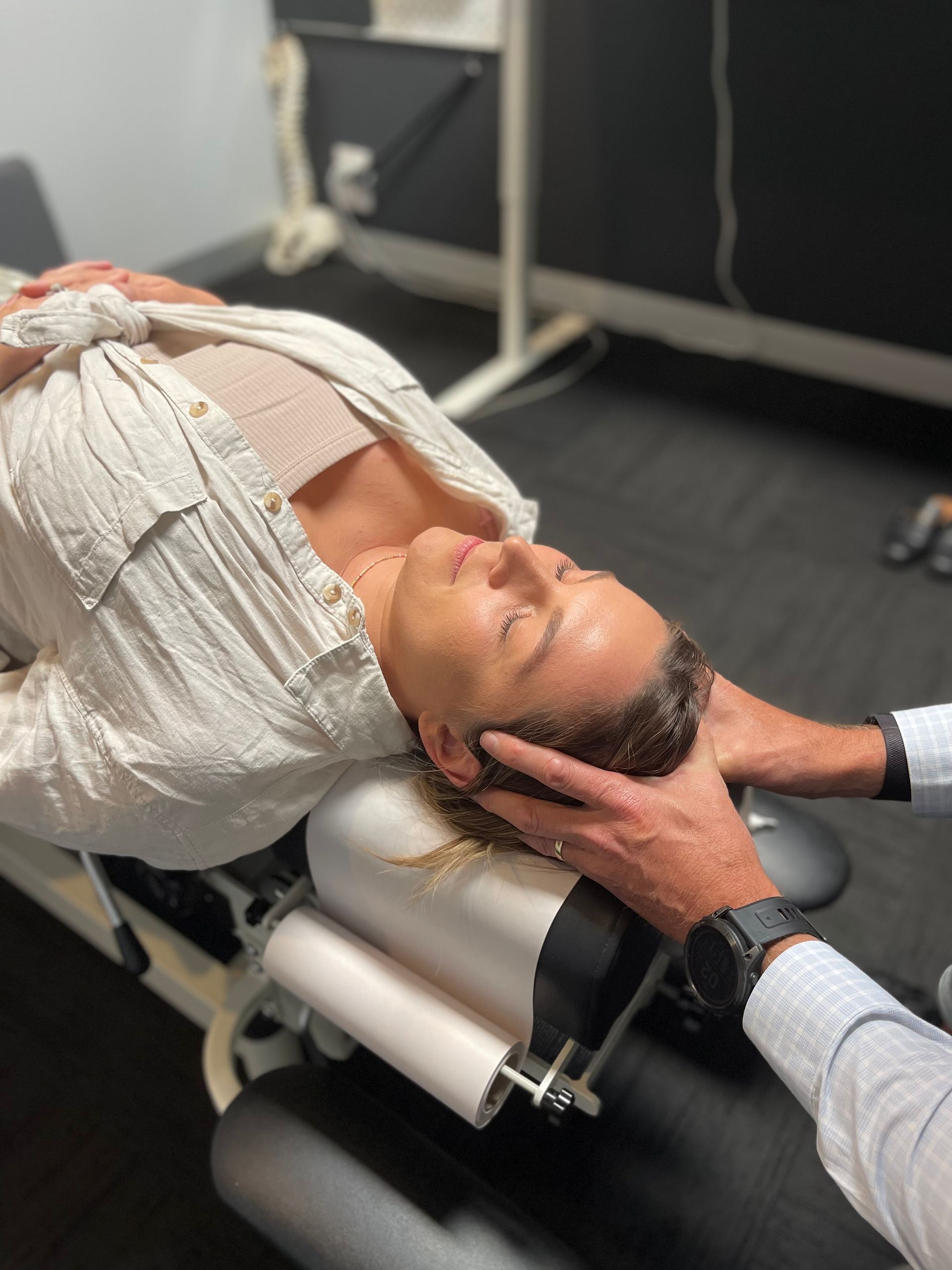
Now, let's look at what is the difference between a chiropractor and an osteopath by looking at what they do! They diagnose and treat musculoskeletal conditions, but in different ways.
Chiropractors use their hands or specific tools to apply controlled force to the spine to restore proper movement and function. Chiropractors believe that spinal adjustment relieves pain, improves mobility, and promotes wellness.
However, osteopaths take a holistic approach to the body's structure and function, focusing on the spine, joints, muscles, ligaments, and even internal organs. They believe that improving the body's balance can help heal and prevent future issues.
Chiropractors focus on spinal adjustments as a primary treatment modality, while osteopaths use soft tissue manipulation, joint mobilization, exercise prescription, and
Chiropractors focus on spinal alignment through adjustments, while osteopaths take a more holistic approach that considers the body's structure and function.
Focus On Spinal Health
Chiropractic care focuses on spinal alignment and manipulation, while osteopathy considers the whole body's structure and function.
Spinal adjustments, mobilization, and traction are some of the methods chiropractors use to diagnose and treat spine conditions.
Three key aspects of chiropractors' spine-focused approach are:
- Precise Alignment: Chiropractors have extensive knowledge of the musculoskeletal system and understand how misaligned vertebrae can affect overall health. Through targeted adjustments, they aim to bring the spine back into proper alignment.
- Nerve Function: Chiropractors believe that a misaligned spine can interfere with nerve function, leading to various health issues beyond just back pain. By correcting spinal misalignments, they aim to improve nerve communication throughout the body.
- Prevention: Chiropractic care is not only about addressing current issues but also preventing future problems. Regular adjustments can help maintain proper spinal alignment and prevent potential complications down the line.
Osteopaths focus on the whole body, not just the spine, unlike chiropractors, who only treat musculoskeletal issues.
Holistic Approach
Osteopaths believe that the optimal functioning of the musculoskeletal system depends on the proper functioning of other bodily systems. They recognise that our bodies are complex and interconnected, with each system affecting the others.
Osteopaths use soft tissue manipulation, joint mobilization, and muscle energy techniques in addition to spinal manipulation techniques like chiropractors to treat body imbalances or restrictions that may cause spinal health issues.
Osteopaths can treat a wide range of conditions, not just spinal health, by emphasizing holistic care and considering all aspects of a patient's health. In the next section about 'patient populations,' we'll discuss how this unique approach makes osteopathy suitable for different age groups and medical needs.
Patient Populations
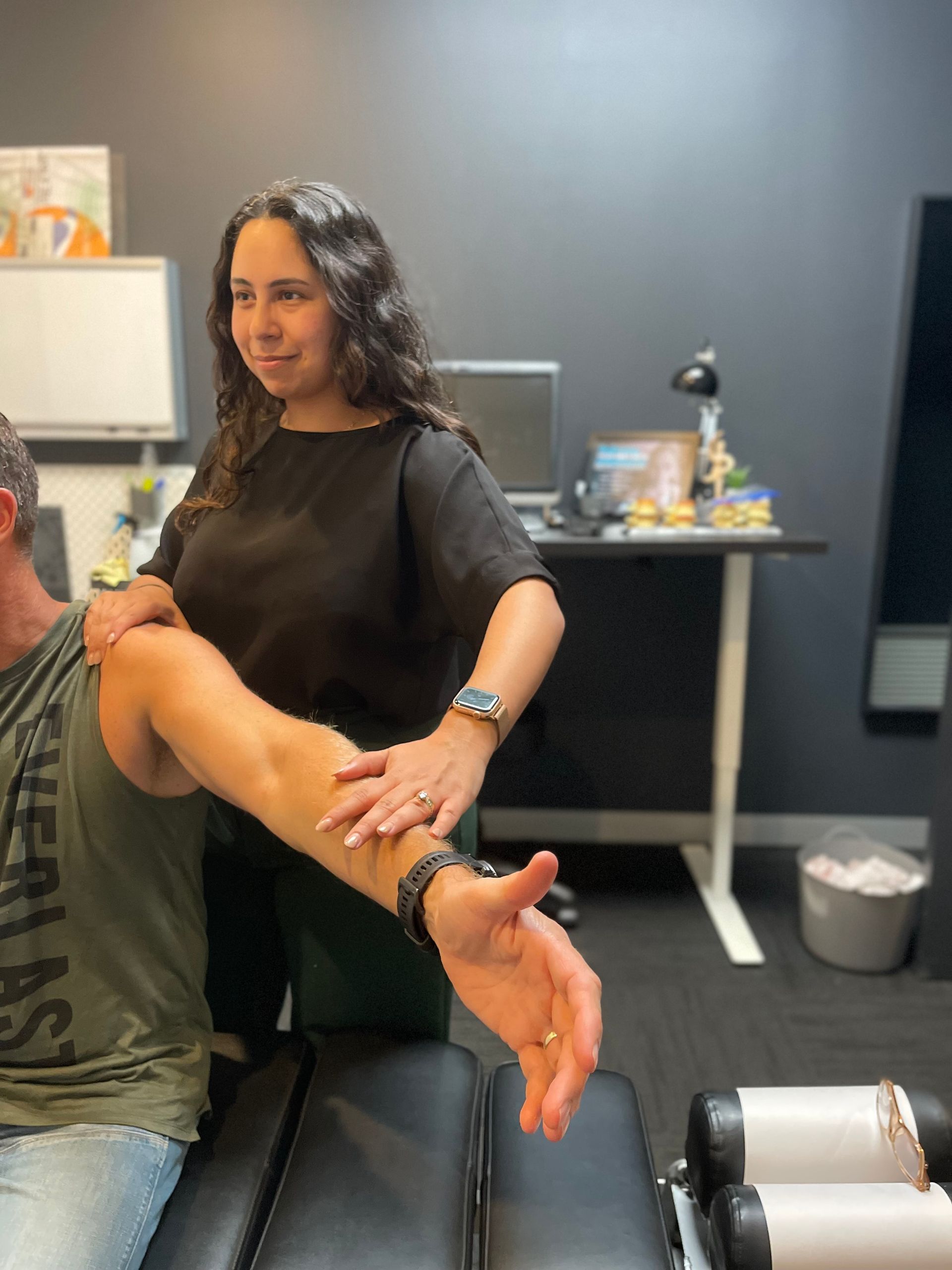
You'll be surprised to see how osteopathy meets the needs of patients of all ages and medical backgrounds. Osteopaths are trained to treat infants through older adults and understand that each patient population requires a different approach and treatment plan.
Children: Osteopaths can help with common childhood conditions such as colic, ear infections, and developmental issues. They use gentle techniques to address these concerns without resorting to invasive procedures or medications.
Athletes: Osteopaths work closely with athletes to improve their performance by addressing any musculoskeletal imbalances or restrictions that may be affecting their movement. They focus on optimizing joint mobility, muscle flexibility, and overall body function.
Pregnant Women: Osteopathy offers safe and effective treatment options for pregnant women who may experience discomfort or pain during pregnancy. The gentle manipulations used by osteopaths can relieve back pain, pelvic pain, and other pregnancy-related issues.
Seniors: As we age, our bodies undergo changes that can lead to reduced mobility, balance problems, and chronic pain. Osteopathy can help seniors maintain optimal spinal alignment, prevent falls by improving balance, and manage conditions such as arthritis.
Osteopaths tailor treatments to specific patient populations, unlike chiropractors, who focus on spinal alignment without considering the patient's medical history or age.
Common Conditions Treated
Osteopaths, like chiropractors, specialize in pain management and the musculoskeletal system, but they also use manual therapy to treat digestive disorders, respiratory issues, and headaches.
Chiropractors and osteopaths commonly treat back pain, which can be caused by poor posture, muscle strain, or a spinal misalignment. They can realign the spine and relieve pain with manual adjustments and other methods like massage and acupuncture.
Chiropractors and osteopaths frequently treat neck pain or stiffness resulting from poor ergonomics or repetitive neck muscle strain, in addition to back pain. Both can use gentle manipulations to realign the cervical spine and relieve neck muscle tension.
Arthritis, sports injuries, or overuse can significantly impact a person's quality of life by causing joint pain. Chiropractors and osteopaths can use manual therapy techniques like joint mobilization or manipulation to reduce inflammation and improve joint function.
Philosophy Of Care
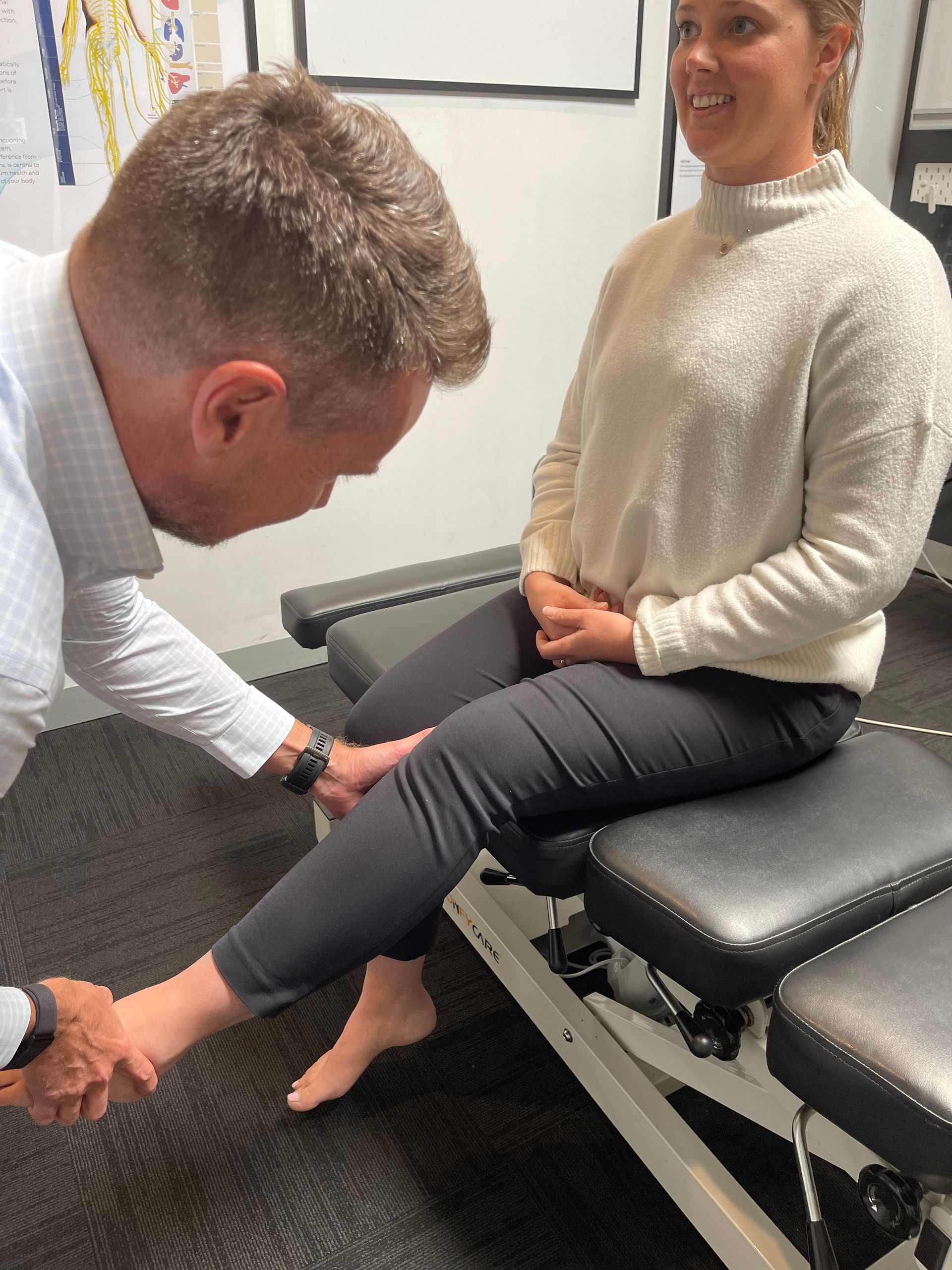
Chiropractors focus on the spine, believing that proper spinal alignment is essential for overall health and well-being. Osteopaths take a more holistic approach, considering the entire body as interconnected and aiming to restore balance and harmony.
Chiropractors emphasize spinal adjustments to correct misalignments or subluxations to optimize nerve function and promote body healing. Spinal alignment issues are the root of this philosophy, as they can be traced back to many health issues.
All body systems are interconnected and work together to maintain health, according to osteopaths. They use hands-on techniques like stretching, massage, and gentle manipulation of muscles and joints to restore balance and function.
Chiropractors focus on spinal alignment to improve overall health, while osteopaths consider how different parts of the body interact. Understanding these differences can help people choose a car.
Moving into collaboration with other healthcare providers: Chiropractic and osteopathic patients should remember that these treatments can complement traditional medical approaches. By working with other healthcare providers, like doctors or physical therapists, patients can receive comprehensive care that addresses all aspects of their condition.
Collaboration With Other Healthcare Providers
As a chiropractor or osteopath, I understand the importance of working with other professionals to provide the best care for our patients.
By pooling our expertise and resources, we can provide more holistic care that considers all aspects of our patients' well-being by collaborating with medical doctors, physical therapists, and other specialists. This multidisciplinary approach improves patient outcomes and satisfaction.
Chiropractic and osteopaths both manipulate the spine to restore proper alignment and function, but by working with physical therapists who can strengthen supporting muscles or orthopedic surgeons who can address structural issues, we can ensure that our patients receive a comprehensive treatment plan.
Collaboration with other healthcare providers also allows us to treat any underlying conditions or coexisting health issues that may be causing our patients' symptoms. For example, if a patient comes to me for chronic back pain but a medical doctor discovers that they also have an undiagnosed autoimmune disorder, we can jointly develop a treatment plan to treat both conditions.
By sharing our expertise and resources, we can provide more holistic care that addresses all aspects of our patients' well-being, improving both short-term and long-term outcomes.
Patient Satisfaction And Outcomes
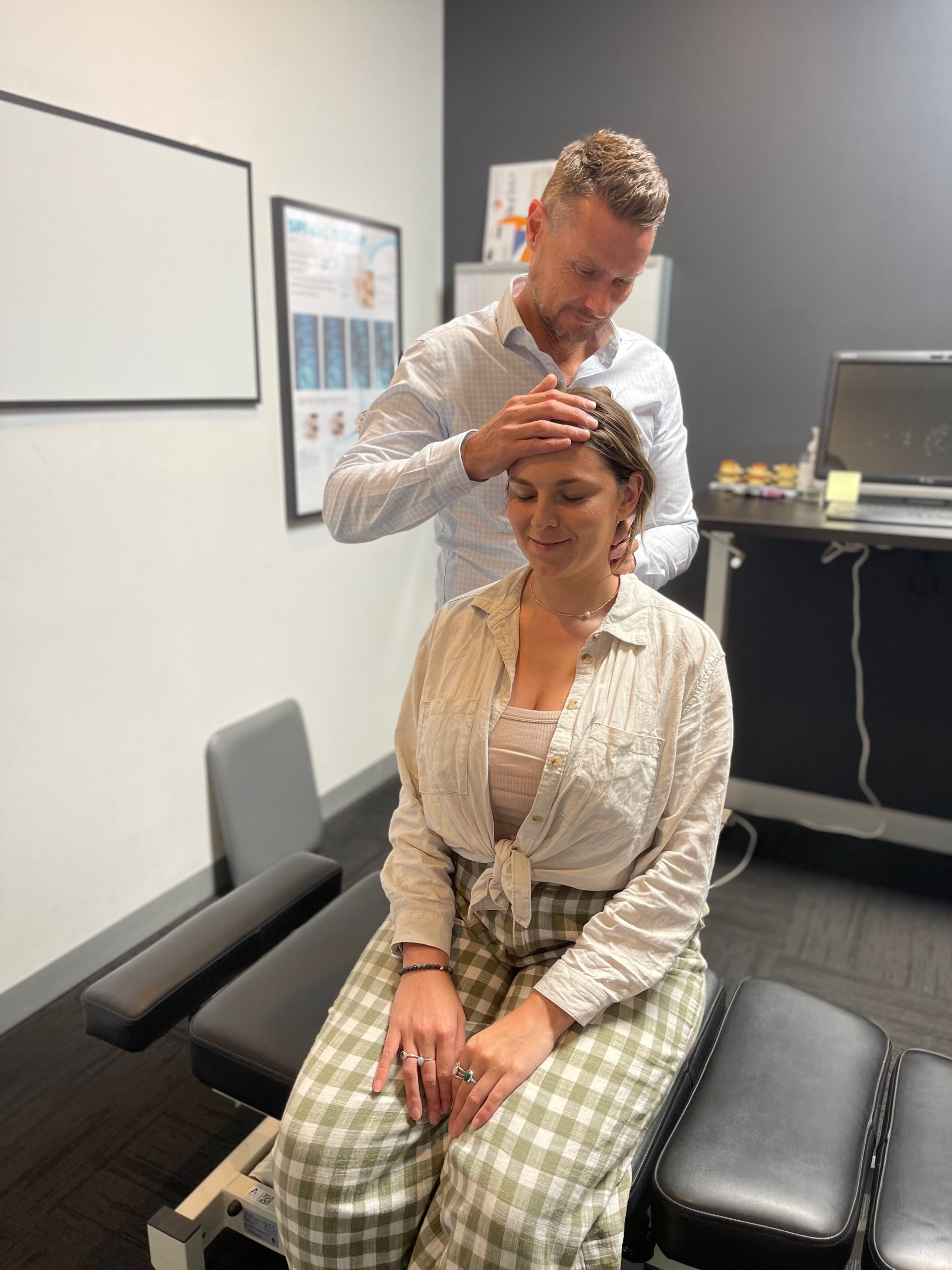
Now that we've discussed chiropractor-healthcare provider collaboration, let's talk about spinal alignment, patient satisfaction and outcomes. As a practitioner who's passionate about providing innovative solutions to my patients, I know how important it is to provide effective treatments and ensure patient satisfaction.
Both chiropractors and osteopaths aim to improve patient satisfaction by using manual therapies to treat various health conditions. However, chiropractors focus on resetting alignment and function through spinal adjustments, while osteopaths consider the potential impact on other parts of the body.
Both chiropractic care and osteopathy can improve patient outcomes for conditions like back pain, neck pain, headaches, and musculoskeletal issues, but individual preferences may determine which approach is best for each patient. Some patients may prefer chiropractors' specific spinal adjustment techniques, while others may prefer osteopathy's wider range of treatment options.
As an innovative practitioner, I strive to provide personalized care tailored to each patient's unique needs by actively listening to their concerns and involving them in the decision-making process. Communication skills, empathy, and trust between practitioners and patients also contribute to patient satisfaction.
Chiropractors and osteopaths both strive for patient satisfaction and positive outcomes in treating spinal alignment-related health conditions, but their approaches differ. Choosing one over the other depends on your personal preferences and needs. However, finding a practitioner who prioritizes effective communication and personalized care will greatly improve your satisfaction and outcomes.
Final Thoughts
In conclusion, as someone who's experienced both chiropractic and osteopathic care, I can confidently say that there are distinct differences between the two professions. While both chiropractors and osteopaths focus on musculoskeletal health and use manual techniques to treat their patients, their approaches to healthcare can vary. Chiropractors typically emphasize spinal adjustments to restore proper alignment and alleviate pain. They often have a more specialized focus on the spine and nervous system.
On the other hand, osteopaths take a more holistic approach, considering the body as a whole and using a wider range of treatment methods such as soft tissue manipulation, joint mobilization, and exercise prescription. Despite these differences, both chiropractors and osteopaths play important roles in musculoskeletal healthcare.
Ultimately, it's up to individuals to decide which approach resonates with them best based on their specific needs and preferences. Whether seeking relief from back pain or looking for overall wellness support, consulting with either a chiropractor or an osteopath can be beneficial in achieving optimal musculoskeletal health.
Frequently Asked Questions
Do Chiropractors And Osteopaths Treat The Same Conditions?
Chiropractors and osteopaths treat similar conditions, but their methods differ. Both professions care for overall health and may treat back, neck, and joint pain.
Chiropractors use spinal adjustments and manipulations to treat these conditions, while osteopaths use manual techniques to manipulate muscles and joints and may use medication or surgery.
While they treat similar conditions, each profession has its own body-healing methods and philosophies.
Are Chiropractors And Osteopaths Considered Primary Healthcare Providers?
Both chiropractors and osteopaths are primary healthcare providers and vital to providing innovative and holistic care.
As primary healthcare providers, they treat musculoskeletal issues, joint pain, back pain, and other conditions using non-invasive methods like spinal adjustments, manipulations, massage therapy, and exercise prescriptions to restore physical balance and wellness.
Chiropractors and osteopaths provide comprehensive care that goes beyond traditional medical approaches, making them valuable resources in primary healthcare innovation.
Can Chiropractors And Osteopaths Prescribe Medication?
As a chiropractor, I can't prescribe medication, but osteopaths can.
Osteopaths, as medical doctors, are trained to prescribe medication. This distinction shows how each profession approaches healthcare.
Consider these differences when choosing a chiropractor or osteopath for your health needs. Chiropractors focus on spinal adjustments and non-invasive healing methods, while osteopaths use manual therapies and traditional medicine.
Are There Any Potential Risks Or Side Effects Associated With Chiropractic Or Osteopathic Treatments?
Chiropractic and osteopathic treatments can help with certain conditions, but they have risks and side effects.
Chiropractic adjustments may cause soreness or nerve damage, and in rare cases, herniated discs. The risk of muscle strain or joint sprain from osteopathy is low, but you must choose a qualified practitioner who understands your condition and uses appropriate techniques.
Like any medical treatment, discuss side effects and concerns with your doctor before starting chiropractic or osteopathic care.
How Long Does The Average Treatment Session With A Chiropractor Or Osteopath Last?
A chiropractor or osteopath will assess your condition, perform manual adjustments or manipulations, and possibly recommend massage or exercises during a 30-minute to hour-long treatment session.
Chiropractors and osteopaths provide personalized care to improve your well-being and promote natural healing, but session length depends on your needs and condition. These treatment sessions offer an opportunity for innovation in addressing your health concerns, whether you're seeking back pain relief or non-invasive healthcare.
Latest Articles
Mornington Peninsula
Chiropractic
Just up the road from you...
- Mon - Fri
- -
- Sat - Sun
- Appointment Only
Mornington
03 9787 8518
Rosebud
03 5911 8181
CONDITIONS
LINKS
Our Locations
Designed By Jon Web Design



